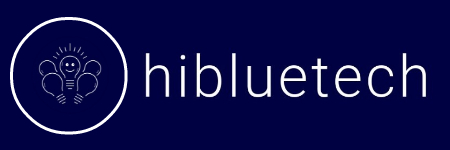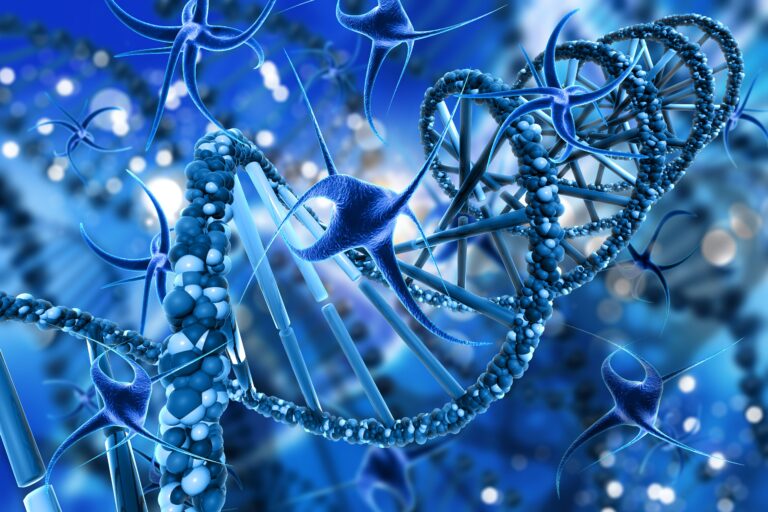Nanotechnology is the branch of science and engineering that involves the study of particles at a dimension of as low as between 1 and 100 nanometers. In medicine, and other life-saving therapies minimizing side effects while maximizing effectiveness. This advancement is just one example of nanotechnology in everyday life, making significant improvements in healthcare and beyond. In the energy sector, it contributes to the development of more efficient solar cells and batteries, making renewable energy sources more accessible. More so, the importance of nanotechnology extends beyond mere innovation; it has the potential to address some of the world’s most pressing challenges, including healthcare, environmental sustainability, and resource efficiency as mentioned.
What is Nanotechnology?
Nanotechnology is the field that deals with the materials of nanoscale. The National Nanotechnology Initiative calls it “nanotechnology” if only, “the research and technology development at the atomic, molecular or macromolecular levels, in the length scale of approximately 1-100 nanometer range, creating and using structures, devices and systems that have novel properties and functions because of their small and/or intermediate size and ability to control or manipulate on the atomic scale”. This technology combines principles from various fields, including physics, chemistry, biology, and engineering, to create structures and devices with enhanced characteristics.
The process of nanotechnology involves several techniques to create and manipulate materials at the nanoscale. One common method is bottom-up synthesis, where smaller units like atoms or molecules are assembled into larger structures. Another approach is top-down fabrication, which involves breaking down bulk materials into nanoscale components using techniques such as milling or etching.
Physicist Richard Feynman introduced the concept of nanotechnology during his talk titled “There’s Plenty of Room at the Bottom” at an American Physical Society meeting at Caltech on December 29, 1959. In his talk, he envisioned that the entire Encyclopedia Britannica could be printed on the head of a pin. Although scientists had worked with nanoparticles for many years, their research was largely limited because they couldn’t see the nanoparticles themselves.
Be that as it may, nanotechnology is important because it has the potential to drive significant changes in many aspects of our lives. With applications ranging from targeted drug delivery systems in medicine to more efficient energy solutions, the knowledge of how nanotech works can inform better decision-making and foster innovation.
How Nanotechnology Works
Nanotechnology works by manipulating materials at an incredibly small scale, allowing scientists and engineers to create devices and systems with unique properties and functions. This difference opens up new possibilities in various fields, leading to innovative applications in medicine, electronics, energy, and materials science.
One of the cardinal aspects of nanotechnology is the development of nanodevices. These tiny devices can include nanoparticles, nanostructures, and nanoscale systems that perform specific functions. For example, nanoparticles can be engineered to deliver drugs directly to targeted cells in the body, enhancing the effectiveness of treatments while reducing side effects.
Nanotechnology is generally categorized into two main types: bottom-up and top-down approaches. The bottom-up approach involves assembling materials from the atomic or molecular level to create larger structures. Chemical synthesis combines smaller units to create nanomaterials. In contrast, the top-down approach begins with bulk materials and breaks them down into nanoscale components using methods like etching or milling.
Sessions in nanotechnology typically involve a mix of theoretical study and practical experimentation. This includes extensive testing and analysis to determine the best methods for creating and applying nanodevices.
Common Uses
Nanotechnology has a wide range of applications across various fields, significantly improving the quality of products and services we rely on every day. One of the most notable uses is in medicine, where nanotechnology is revolutionizing drug delivery systems.
In electronics, nanotechnology is driving advancements in the development of smaller, faster, and more efficient devices. For example, the use of nanoscale materials in transistors and microchips contributes to breakthroughs in consumer electronics and future technologies like the Internet of Things (IoT). As the future of nanotechnology in energy and electronics continues to evolve, it will shape everything from consumer gadgets to infrastructure development.
How Nanotechnology Improves Solar Energy and Environmental Sustainability
Another significant application is in the field of energy. Nanotechnology in solar energy is driving improvements in panel efficiency, while nanomaterials in batteries contribute to a more sustainable future. These advancements align with the global push for environmental sustainability, showcasing the wide-reaching impact of this technology.
Nanotechnology also finds application in environmental protection and remediation. Nanoparticles can be used to remove pollutants from water and air, providing a more effective solution for environmental cleanup.
Nanotechnology in Everyday Life and Consumer Products
Nanotechnology is an advanced technique which has progressively entered everyday life, conquering an increased importance in many fields. As an emerging strategy for development, nano-based ingredients have found a place as consumer products in the market such as paints, building materials, cosmetics and in medical treatment, the food industry and so much more.
For example, nanoparticles in sunscreens provide improved UV protection while remaining transparent on the skin, offering both safety and aesthetic appeal. In electronics, devices like smartphones and tablets utilize nanoscale components that make them faster and more efficient.
While the benefits of nanotechnology are evident, there are also important health, environmental, and ethical risks to consider. Nanoparticles, due to their small size, have the potential to penetrate biological membranes, which could lead to unintended health effects such as toxicity or immune system reactions. For instance, there are concerns about the long-term effects of nanoparticle exposure in medical applications, where they may accumulate in organs or tissues.
Additionally, nanotechnology can have environmental implications. The production and disposal of nanomaterials could introduce new forms of pollution, and there is still uncertainty about the behavior of nanoparticles in ecosystems. For example, nanoparticles used in pesticides or industrial applications could contaminate water supplies or accumulate in food chains.
From an ethical standpoint, there is also concern about the potential for economic disparity: access to advanced nanotechnology could widen the gap between developed and developing nations. Furthermore, the ability to create self-replicating nanobots raises theoretical risks, such as the “gray goo” scenario, where out-of-control nanobots could potentially cause catastrophic damage. Although this is considered science fiction by most, it highlights the need for regulation and oversight as the technology advances.
Understanding Basic Results
Understanding the basic results of nanotechnology is crucial, especially in the medical field where it plays a significant role in diagnostics and treatment. When doctors use nanotechnology based tests, they often look for specific markers that indicate health conditions.
In diagnostics, key markers vary depending on the condition being assessed. Nanotechnology enhances the sensitivity of tests, allowing for the detection of these markers at extremely low concentrations. This improved sensitivity means that diseases can be identified earlier, which often leads to better outcomes.
The results obtained from nanotechnology-based diagnostics can also be used to improve cognitive performance. Research is exploring how nanotechnology can help in delivering drugs that target specific areas of the brain, potentially enhancing cognitive functions such as memory and learning.
Moreover, nanotechnology can contribute to personalized medicine, where treatment plans are tailored based on individual responses to therapies. Interpreting diagnostic results accurately, could aid healthcare providers to develop more effective interventions aimed at enhancing cognitive function.
Advancement in Nanotechnology
Advancements in nanotechnology have brought significant improvements in various fields, particularly in medicine, electronics, and materials science. In medicine, researchers are developing nanoparticles that deliver drugs directly to cancer cells, increasing treatment effectiveness while reducing side effects.
In electronics, the miniaturization of components through nanotechnology has resulted in faster and more efficient devices. Nanoscale transistors allow for the production of smaller, more powerful smartphones and computers, enhancing user experience.
Materials science has also benefited from these advancements, leading to the creation of stronger, lighter, and more durable materials. Nanocomposites are being used in construction and automotive industries to improve strength and longevity.
What to Expect from Nanotechnology Test
When preparing for a nanotechnology test, it’s important to know what to expect beforehand. Patients need to discuss the purpose of the test with their healthcare provider, covering any necessary preparations and the significance of the markers being tested. They should also inform the provider about any medications or supplements they are taking, as these can affect the results. After the test, patients can typically expect results within a few days. Insurance coverage for these tests can also differ, so it’s wise to check with the insurance provider about coverage details and any potential out-of-pocket costs. Safety concerns are generally low, as many nanotechnology tests are non-invasive.
Risk Mitigation
Mitigating Risks in Nanotechnology To address the potential risks of nanotechnology, researchers are actively developing safety protocols and regulatory guidelines.Researchers are conducting toxicology studies to understand how nanoparticles interact with human tissues. These studies help design biocompatible nanomaterials that reduce health risks. In the environmental field, scientists are exploring ways to recycle nanomaterials and reduce their impact through green chemistry techniques, which focus on reducing hazardous waste during production.
International organizations, such as the National Nanotechnology Initiative (NNI), are developing comprehensive guidelines to balance nanotechnology innovation with safety considerations. They aim to maximize its benefits while preventing harm.
Researchers at Rice University studied silver nanoparticles. These nanoparticles are used in products like clothing and bandages. The study found that they could leach into water systems, potentially harming aquatic life. Follow-up studies developed coatings to reduce this leaching. This made the technology safer for widespread use.
Future Potential of Nanotechnology
Nanotechnology is an emerging science that is expected to have exponential growth. According to scientists, nanotechnology is predicted to significantly contribute to economic growth and job creation. The future of nanotechnology promises significant advancements, especially in healthcare. The main tendency in future development of nano-materials is to make them flexible for countless uses by control of signals emitted and hereby revolving them into nano-devices. In the near future, nanotechnology will embellish a critical tool against severe and infectious diseases. Moreover, another future perspective involves the catalysis of biologically inspired nanobiomaterials and their development.
In electronics, nanotechnology will continue to drive innovation through the miniaturization of components, resulting in faster and more efficient devices. This will enhance consumer electronics and enable the development of emerging technologies like the Internet of Things (IoT) and smart cities.
Sustainability is another critical area where nanotechnology will make a difference. It can also improve fertilizers and pesticides, leading to increased crop yields while reducing environmental impact.
Conclusion
Nanotechnology has generated excitement world-wide and is being regarded as the key technology of the 21st century. This excitement is partly due to the development of new instruments for observing and manipulating matter at the nano level.Nanotechnology will create new opportunities. It can improve electronics, medicines, products, cars, and homes. This technology can make these items better and cheaper while using fewer raw materials. As research in this area advances, we can expect nanotechnology to lead to groundbreaking discoveries. It will enhance cancer treatment and future energy applications. This technology will improve our quality of life. It will also help create a more sustainable and innovative future. If you find this blog post interesting, don’t forget to comment and share. Thanks.

